HISTORY OF ZEPHYRHILLS HIGH SCHOOL1910 — The Beginning at Zephyrhills High School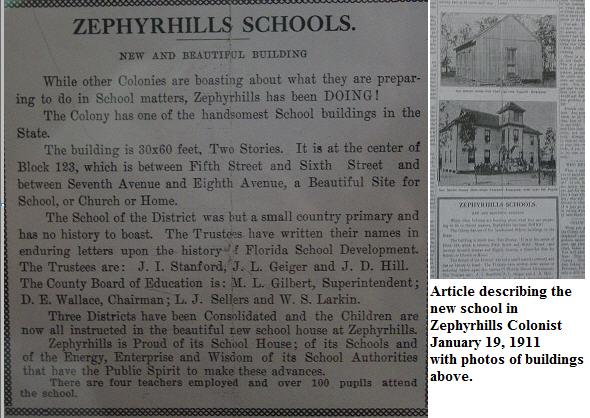 Per Rosemary Wallace Trottman from her book, The History of Zephyrhills– The old settlers were eager for the success of the Zephyrhills Colony Company. The development provided jobs, markets, and interest at a critical time when lumber and turpentine work was diminishing and there was little change in routine. Each oldtimer did what he could to encourage and assist each colonist. They turned out in buggies, wagons, and oxcarts at dedications of such buildings as the Hennington’s new store, the Colony House and the G.A.R. Hall and for the ground breaking of the consolidated school. Student, Leo Ecker, and his new friends entered that first day,
The principal’s office was in the second story room above the small entrance porch. In the belfry overhead hung the bell donated by the colony company. A stout rope ran through a neat hole in the ceiling to hang near the principal’s desk. Hallowe’ens were not properly celebrated unless the big boys succeeded in removing the clapper from the bell. It was always hidden under the desk, in a bottom drawer, behind a good case, or in some other easily discovered place. The building in 1910 had four rooms on the first floor with a wide hall and stairways leading to the upper story which was divided into two rooms. The dividing wall was a set of folding doors arranged on a metal track so that they could be folded back to make an auditorium of the two classrooms when necessary. The rooms were soon overcrowded. During the summer following the school’s opening, an addition with a hall and stairway ascending to the upper room and giving access to the auditorium were built at the rear. Finally a separate primary building was necessary and a one-story building of two rooms between the main building and Seventh Avenue were added. No picture of the first faculty survives, perhaps due to lack of interest when so many other interesting things were happening all over the region. The earliest faculty pictured included Mr. William Cleveland Finney, and Mrs.W.C. Finney, the Misses Holmes, Muriel Storms, Ruth Sumner, Birdina Schenck, Lillie Geiger, Lillian Carter, Nina Percival and V.C. Mathews. The earliest pictured student group included Belle Adkins, Hazel Hart (Batchelor), Flora Shanks (Skogstad), Uarda Briggs, Mary Lisle, an unidentified boy, Jeffrey Turner, Jessie Herndon, Lula Ryals, Blance Geiger (Turner), Lawrence Percival and Simon Geiger.
Some additional history …..from teacher, Rosemary Wallace Trottman…
 The first principal of ZHS was Judge James Wilton Sanders. A plaque in recognition of Sanders, is posted in The Lacoochee School House Exhibit at the Dade City Pioneer Museum and looks like the following. The plaque includes a memoriam and a biography of Judge Sanders which highlights his role as the first principal of ZHS. 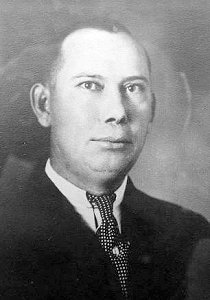  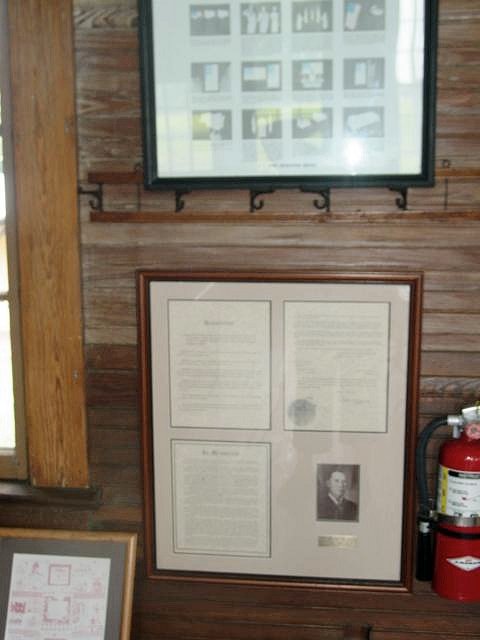 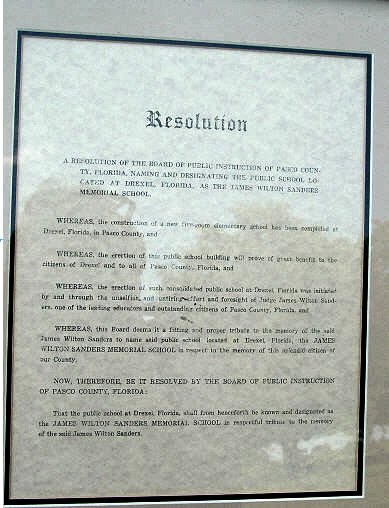 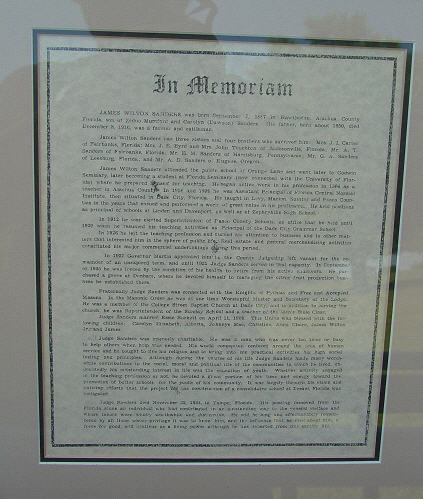
Wording from the Resolution above reads– A Resolution of the Board of Public Instruction of Pasco County, Florida, naming and designating the public school located at Drexel, Florida as the James Wilton Sanders Memorial School. Whereas the construction of a new five room elementary school has been completed in Drexel, Florida, in Pasco County, and Whereas the erection of such consolidated public school at Drexel, Florida was initiated by and through the unselfish and untiring effort and foresight of Judge James Wilton Sanders, one of the lasting educators and outstanding citizens of Pasco County, Florida, and Whereas the Board furnishes this to present tribute to the memory of the Judge James Wilton Sanders in the naming of the school located at Drexel, Florida, JAMES WILTON SANDERS MEMORIAL SCHOOL in honor and respect to the memory of this splendid citizen of our County. Now therefore, be it resolved by the Board of public instruction of Pasco County, Florida. That the public school of Drexel, Florida, shall from henceforth be known and designated as the JAMES WILTON SANDERS MEMORIAL SCHOOL in respectful tribute to the memory of the said James Wilton Sanders Be it further resolved that a copy of this resolution be recorded upon the minutes of the board. Be it further resolved that this resolution be read at the dedication commencing upon the conclusion of the building of the said James Wilton Memorial School and that a memorial plaque with the designation of said school be herein provided, be placed in or upon said school as to permanently confirm the same and designation of said school. Be it further resolved that a copy of this resolution is verified by the Secretary of the Board and designees to the Principal of the said James Wilton Sanders Memorial School with the instructions that said copy of said resignation be retained among the records of said school Be it further resolved that a copy of this resolution is certified by the secretary of the board… Wording from the Memoriam above— James Wilton Sanders was born September 7, 1887 in Hawthorne, Alachua County, Florida, son of Zedoo Munford and Carolyn (Dawson) Sanders. His father born about 1850, died December 8, 1916, was a farmer and cattleman. James Wilton Sanders has three sisters and four brothers who survived him: Mrs. J.L. Carter of Fairbanks, Florida; Mrs. J.E. Byrd and Mrs. John Touchton of Jacksonville, Florida; Mr. A.P. Sanders of Fairbanks, Florida; Mr. H.M. Sanders of Harrisburg, Pennsylvania; Mr. G.A. Sanders of Leesburg, Florida and Mr. D.A. Sanders of Eugene, Oregon. James Wilton Sanders attended the public schools of Orange Lane and later went to Godwin Seminary. Later he became a student at Florida Seminary (now connected with the University of Florida) where he prepared himself for teaching. He began active work in his profession in 1906 as a teacher in Alachua County. In 1908 and 1909 he was Assistant Principal at Florida Central Normal Institute then situated in Dade City, Florida. He taught in Levy, Marion, Sumter and Pasco Counties in the years that ensued and performed a work of value in his profession. He had positions as principal of schools at Linden and Davenport as well as Zephyrhills High School. In 1912, he was elected Superintendent of Pasco County Schools, an office that he held until 1920 when he resumed his teaching activities as Principal of Dade City Grammar School. In 1926 he left the teaching profession and turned his attention to business and to other matters that interested him in the sphere of public life. Real Estate and general merchandising activities constituted his major commercial undertakings during this period. In 1927, Governor Martin appointed him to the County Judgeship left vacant for the remainder of an unexpired term and until 1935, Judge Sanders served in that capacity. In September 1935, he was forced by the condition of his health to retire from his active endeavors. He purchased a grove in Denham where he devoted himself to managing the citrus fruit production business be established there. Judge Sanders married Essie Burkett on April 11, 1909. The union was blessed with the following children: Carolyn Elizabeth, Alberta, Johnnye Mae, Christine, Anna Claire, James Wilton Jr., and James. Judge Sanders died November 25, 1938, in Tampa, Florida. |
